Transcription of Oncology Certified Nurse (OCN ) Test Content Outline ...
1 Oncology Certified Nurse (OCN ) Test Content Outline ( effective 2018 ) I. Care Continuum - 19% A. Health promotion and disease prevention ( , high-risk behaviors; preventive health practices) B. Screening and early detection C. Navigation D. Advance care planning ( , advance directives) E. Epidemiology 1. Modifiable risk factors ( , smoking, diet, exercise, occupation) 2. Non-modifiable risk factors ( , age, gender, genetics) F. Survivorship 1. Rehabilitation 2. Recurrence concerns 3. Financial concerns 4. Employment concerns 5. Insurance concerns 6.
2 Family and social support concerns 7. Sexuality concerns G. Treatment-related considerations 1. Delayed-onset side effects 2. Chronic side effects 3. Secondary malignancies 4. Follow-up care H. End-of-life care 1. Grief 2. Bereavement 3. Hospice care 4. Caregiver support 5. Interdisciplinary team 6. Pharmacologic comfort measures 7. Non-pharmacologic comfort measures II. Oncology Nursing Practice - 17 % A. Scientific basis 1. Carcinogenesis 2. Immunology 3. Clinical trials ( , research protocols) B. Site-specific cancer considerations 2017.
3 ONCC. All rights reserved. 1. Pathophysiology 2. Common metastatic locations 3. Diagnostic measures 4. Prognosis 5. Classification 6. Staging 7. Histological grading C. Scope, standards, and related issues 1. Standards of care (nursing process) 2. Legal (including documentation) 3. Accreditation ( , The Joint Commission) 4. Self-care ( , managing compassion fatigue) D. Standards of professional performance 1. Ethics ( , patient advocacy) 2. Education 3. Evidence-based practice ( , Putting Evidence Into Practice (PEP) guidelines) and research 4.
4 Quality of practice 5. Communication 6. Leadership 7. Collaboration 8. Professional practice evaluation 9. Resource utilization 10. Environmental health ( , safety, personal protective equipment, safe handling) III. Treatment Modalities - 19% A. Surgery B. Blood and marrow transplant C. Radiation therapy D. Chemotherapy E. Biotherapy F. Immunotherapy G. Vascular Access Devices (VADs) for treatment administration H. Targeted Therapy IV. Symptom Management and Palliative Care - 23% A. Etiology and patterns of symptoms (acute, chronic, late) 2017.
5 ONCC. All rights reserved. B. Anatomical and surgical alterations ( , lymphedema, ostomy, site-specific radiation) C. Pharmacologic interventions D. Complementary and integrative modalities ( , massage, acupuncture, herbal supplements) E. Palliative care considerations F. Alterations in functioning 1. Hematologic 2. Immune system 3. Gastrointestinal 4. Genitourinary 5. Integumentary 6. Respiratory 7. Cardiovascular 8. Neurological 9. Musculoskeletal 10. Nutrition 11. Cognition 12. Energy level ( , fatigue) V. Oncologic Emergencies - 12% A.
6 Disseminated intravascular coagulation (DIC) B. Syndrome of Inappropriate Antidiuretic Hormone Secretion (SIADH) C. Sepsis (including septic shock) D. Tumor lysis syndrome E. Hypersensitivity F. Anaphylaxis G. Hypercalcemia H. Cardiac tamponade I. Spinal cord compression J. Superior vena cava syndrome K. Increased intracranial pressure L. Obstructions (bowel and urinary) M. Pneumonitis N. Extravasations VI. Psychosocial Dimensions of Care - 10% 2017. ONCC. All rights reserved. A. Cultural, spiritual, and religious diversity B. Financial concerns (including available resources) C.
7 Altered body image D. Learning styles and barriers to learning E. Social relationships and family dynamics F. Coping mechanisms and skills G. Support 1. Patient ( , individual and group) 2. Caregiver (including family) H. Psychosocial considerations 1. Anxiety 2. Loss and grief 3. Depression 4. Loss of personal control I. Sexuality 1. Reproductive issues ( , contraception, fertility) 2. Sexual dysfunction ( , physical and psychological effects) 3. Intimacy
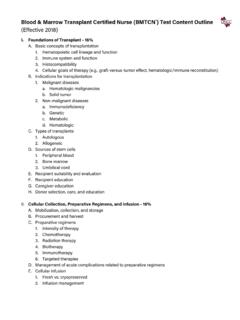
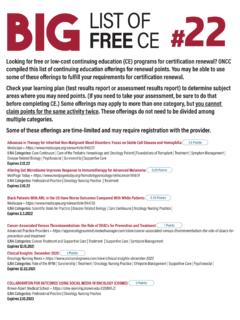
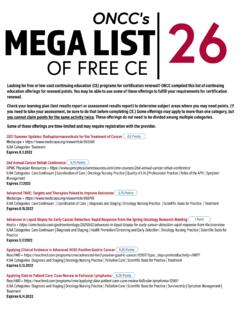
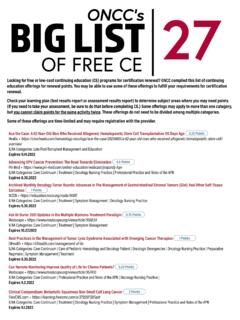

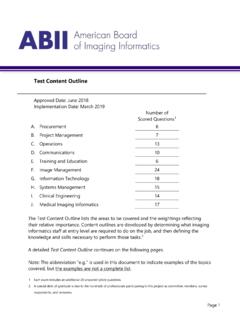



![[Work Area] Number [Category] [Sub-category] [Competency]](/cache/preview/f/8/2/5/e/f/2/6/thumb-f825ef261389541e7266e48b77db3eb5.jpg)

